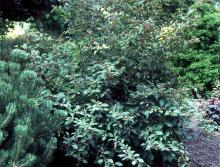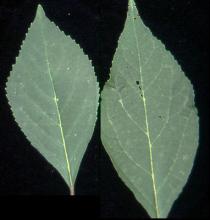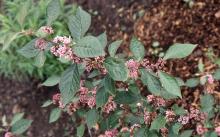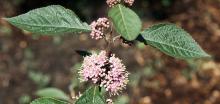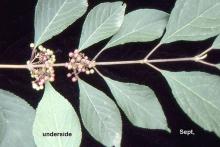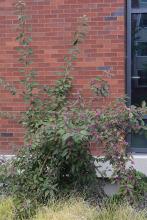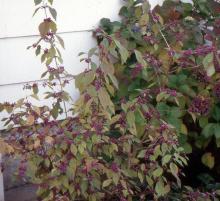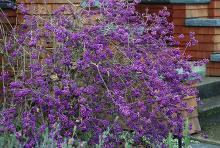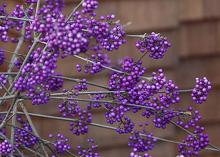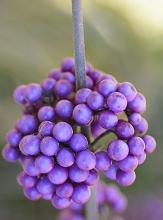Callicarpa bodinieri 'Profusion'
Common name:
Profusion Beautyberry
Pronunciation:
kal-i-KAR-pa bo-din-i-ER-i (bo-din-ee-E-ree)
Family:
Verbenaceae, now Lamiaceae
Genus:
Synonyms:
Callicarpa bodinieri var. giraldii 'Profusion'
Type:
Broadleaf
Native to (or naturalized in) Oregon:
No
- Broadleaf deciduous shrub, grows to 6-10 ft (1.8-3 m), somewhat less in width, upright, bushy. Leaves opposite, simple, elliptic to ovate-elliptic, 5-12 cm long, acuminate tip, margin toothed (denticulate or dentate), blue-green above, pubescent below, especially on veins, often exhibits a purple cast in fall. Purplish flowers are followed by bright violet-purple fruit (3 mm). It may hold the fruit into early winter but not through the winter.
- Full sun for best heavy fruiting.
- Hardy to USDA Zone (5) 6 The specis is native to central and western China.
- 'Profusion' is the most common cultivar, it has an upright habit (it can be pruned to from a rounded, dense habit), bronze new growth, pale pink flowers, dark violet fruit.
- bodinieri: after Emile Marie Bodinier (1842-1901), a French missionary who collected plants in China. This species was described and named in 1911 by Augustin Abel Hector Léveillé (1887-1918), a French botanist and priest. He studied tens of thousands of specimens sent to his Académie by collectors in the Far East, including Emile Bodinier.
- Oregon State Univ. campus: southeast side Austin Hall, on Jefferson Way

